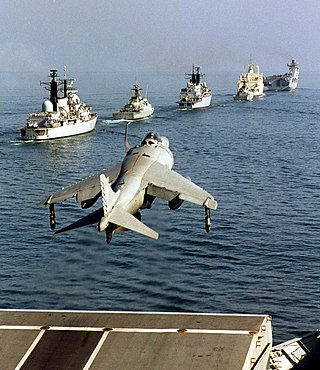
A short take-off and vertical landing aircraft is a fixed-wing aircraft that is able to take off from a short runway and land vertically. The formal NATO definition is:
A Short Take-Off and Vertical Landing aircraft is a fixed-wing aircraft capable of clearing a 15 m obstacle within 450 m of commencing take-off run, and capable of landing vertically.
A vertical take-off and landing (VTOL) aircraft is one that can take off and land vertically without relying on a runway. This classification can include a variety of types of aircraft including helicopters as well as thrust-vectoring fixed-wing aircraft and other hybrid aircraft with powered rotors such as cyclogyros/cyclocopters and gyrodynes.

A vertical and/or short take-off and landing (V/STOL) aircraft is an airplane able to take-off or land vertically or on short runways. Vertical takeoff and landing (VTOL) aircraft are a subset of V/STOL craft that do not require runways at all. Generally, a V/STOL aircraft needs to be able to hover. Helicopters are not considered under the V/STOL classification as the classification is only used for aeroplanes, aircraft that achieve lift (force) in forward flight by planing the air, thereby achieving speed and fuel efficiency that is typically greater than the capability of helicopters.
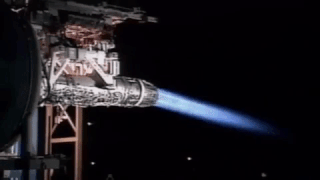
Thrust vectoring, also known as thrust vector control (TVC), is the ability of an aircraft, rocket or other vehicle to manipulate the direction of the thrust from its engine(s) or motor(s) to control the attitude or angular velocity of the vehicle.

A tail-sitter, or tailsitter, is a type of VTOL aircraft that takes off and lands on its tail, then tilts horizontally for forward flight.
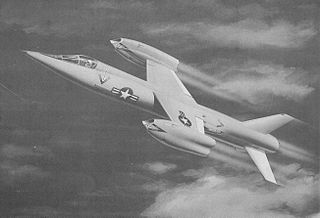
The Bell D-188A was a proposed eight-engine Mach 2–capable vertical take-off and landing (VTOL) tiltjet fighter that never proceeded past the mock-up stage.

The Hawker P.1127 and the Hawker Siddeley Kestrel FGA.1 are the British experimental and development aircraft that led to the Hawker Siddeley Harrier, the first vertical and/or short take-off and landing (V/STOL) jet fighter-bomber.

The Dassault Mirage IIIV, also spelled Mirage III V, was a French vertical take-off and landing (VTOL) prototype fighter aircraft of the mid-1960s developed and produced by Dassault Aviation.
The Hawker Siddeley P.1154 was a planned supersonic vertical/short take-off and landing (V/STOL) fighter aircraft designed by Hawker Siddeley Aviation (HSA).

The EWR VJ 101 was an experimental German jet fighter vertical takeoff/landing (VTOL) tiltjet aircraft. VJ stood for Versuchsjäger,. The 101 was one of the first V/STOL designs to have the potential for eventual Mach 2 flight.

The Dornier Do 31 is an experimental, jet-propelled, vertical take-off and landing (VTOL) cargo aircraft that was designed and produced by West German aircraft manufacturer Dornier.

The VFW VAK 191B was an experimental German vertical take-off and landing (VTOL) strike fighter of the early 1970s. VAK was the abbreviation for Vertikalstartendes Aufklärungs- und Kampfflugzeug. Designed and built by the Vereinigte Flugtechnische Werke (VFW), it was developed with the purpose of eventually serving as a replacement for the Italian Fiat G.91 then in service with the German Air Force. Operationally, it was intended to have been armed with nuclear weapons as a deterrent against aggression from the Soviet Union and, in the event of a major war breaking out, to survive the first wave of attacks by deploying to dispersed locations, rather than conventional airfields, and to retaliate against targets behind enemy lines.
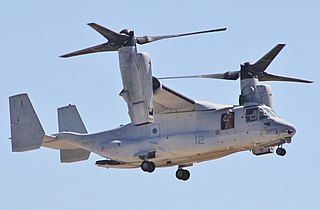
A powered lift aircraft takes off and lands vertically under engine power but uses a fixed wing for horizontal flight. Like helicopters, these aircraft do not need a long runway to take off and land, but they have a speed and performance similar to standard fixed-wing aircraft in combat or other situations.
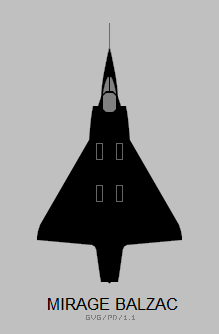
The Dassault Balzac V was a French vertical takeoff and landing (VTOL) testbed of the early 1960s. It was built by Dassault Aviation from a prototype Mirage III aircraft to test the configuration for the Mirage IIIV. The sole example was involved in two major accidents that killed the aircraft's pilot, and was not repaired after the second crash.

The Bell Model 65 Air Test Vehicle (ATV) was an experimental tiltjet VTOL aircraft built by Bell using parts from a number of general aviation aircraft.

The Doblhoff/WNF 342 was an early experimental tip jet helicopter designed and produced by Wiener-Neustädter Flugzeugwerke. It was the first helicopter to take off and land using tip jets to drive the rotor.

Lift fan is an aircraft configuration in which lifting fans are located in large holes in an otherwise conventional fixed wing or fuselage. It is used for V/STOL operation.

A tethered flight test is a type of flight testing where a machine is connected by a tether to the ground. Tethered testing may be used when motion through the atmosphere is not required to sustain flight, such as for airship; vertical take-off and landing (VTOL), rotary wing or tiltwing aircraft ; or for tests of certain rockets, such as vertical takeoff, vertical landing (VTVL). Fixed wing scale models can be tested on a tether in a wind tunnel, simulating motion through the atmosphere.

















